For the 2025 school year, there is 1 public middle school serving 1,002 students in Syracuse Arts Academy School District. This district's average middle testing ranking is 8/10, which is in the top 30% of public middle schools in Utah.
Public Middle School in Syracuse Arts Academy School District have an average math proficiency score of 47% (versus the Utah public middle school average of 36%), and reading proficiency score of 44% (versus the 42% statewide average).
Minority enrollment is 27% of the student body (majority Hispanic), which is less than the Utah public middle school average of 30% (majority Hispanic).
Overview
This School District
This State (UT)
# Schools
2 Schools
367 Schools
# Students
1,740 Students
253,746 Students
# Teachers
90 Teachers
11,762 Teachers
Student : Teacher Ratio
19:1
19:1
District Rank
Syracuse Arts Academy School District, which is ranked within the top 30% of all 153 school districts in Utah (based off of combined math and reading proficiency testing data) for the 2020-2021 school year.
Overall District Rank
#38 out of 154 school districts
(Top 30%)
(Top 30%)
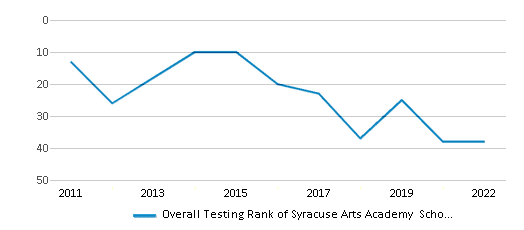
Math Test Scores (% Proficient)
(20-21)49%
39%
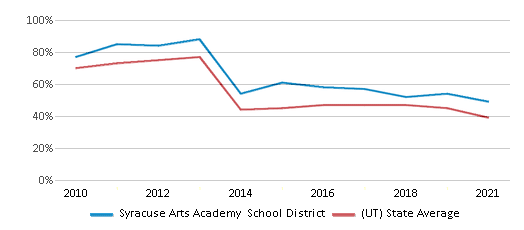
Reading/Language Arts Test Scores (% Proficient)
(20-21)48%
43%
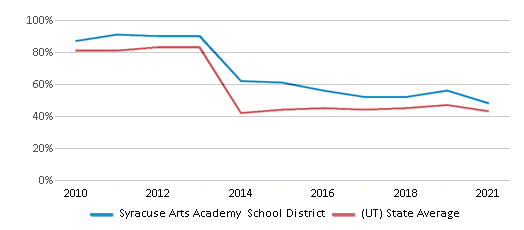
Science Test Scores (% Proficient)
(20-21)53%
45%
Students by Ethnicity:
Diversity Score
0.40
0.47
# American Indian Students
10 Students
2,504 Students
% American Indian Students
n/a
1%
# Asian Students
33 Students
4,545 Students
% Asian Students
2%
2%
# Hispanic Students
240 Students
51,305 Students
% Hispanic Students
14%
20%
# Black Students
14 Students
3,442 Students
% Black Students
1%
1%
# White Students
1,322 Students
178,363 Students
% White Students
76%
70%
# Hawaiian Students
17 Students
3,915 Students
% Hawaiian Students
1%
2%
# Two or more races Students
104 Students
9,598 Students
% of Two or more races Students
6%
4%
Students by Grade:
# Students in PK Grade:
-
482
# Students in K Grade:
173
6,058
# Students in 1st Grade:
177
6,391
# Students in 2nd Grade:
185
6,468
# Students in 3rd Grade:
188
6,398
# Students in 4th Grade:
187
6,415
# Students in 5th Grade:
185
7,201
# Students in 6th Grade:
191
22,231
# Students in 7th Grade:
168
52,075
# Students in 8th Grade:
146
52,556
# Students in 9th Grade:
140
40,980
# Students in 10th Grade:
-
15,392
# Students in 11th Grade:
-
15,301
# Students in 12th Grade:
-
15,798
# Ungraded Students:
-
-
District Revenue and Spending
The revenue/student of $9,434 in this school district is less than the state median of $10,732. The school district revenue/student has stayed relatively flat over four school years.
The school district's spending/student of $10,691 is less than the state median of $10,829. The school district spending/student has stayed relatively flat over four school years.
Total Revenue
$16 MM
$7,309 MM
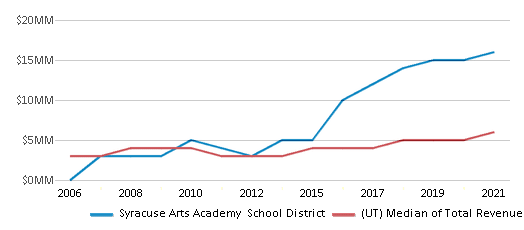
Spending
$19 MM
$7,375 MM
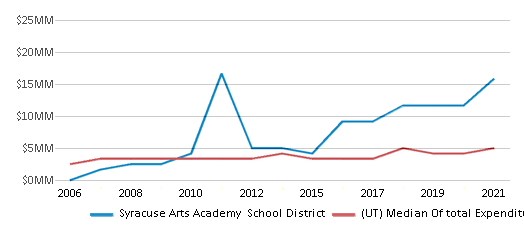
Revenue / Student
$9,434
$10,732

Spending / Student
$10,691
$10,829
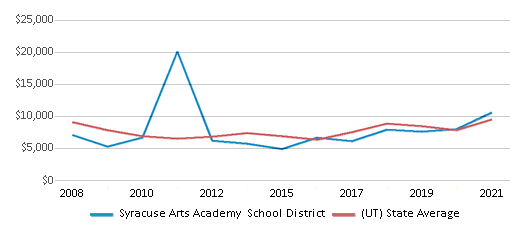
Best Syracuse Arts Academy School District Public Middle Schools (2025)
School
(Math and Reading Proficiency)
(Math and Reading Proficiency)
Location
Grades
Students
Rank: #11.
Syracuse Arts Academy - Antelope
Magnet School
Charter School
Charter School
(Math: 47% | Reading: 44%)
Rank:
Rank:
7/
Top 50%10
2893 W 1700 S
Syracuse, UT 84075
(801) 779-2066
Syracuse, UT 84075
(801) 779-2066
Grades: K-9
| 1,002 students
Recent Articles

Year-Round Or Traditional Schedule?
Which is more appropriate for your child? A year-round attendance schedule or traditional schedule? We look at the pros and cons.

Why You Should Encourage Your Child to Join a Sports Team
Participating in team sports has a great many benefits for children, there is no doubt. In this article you will learn what those benefits are.

White Students are Now the Minority in U.S. Public Schools
Increasing birth rates among immigrant families from Asia and Central and South America, combined with lower birth rates among white families, means that for the first time in history, public school students in the United States are majority-minority. This shift in demographics poses difficulties for schools as they work to accommodate children of varying language abilities and socio-economic backgrounds.





